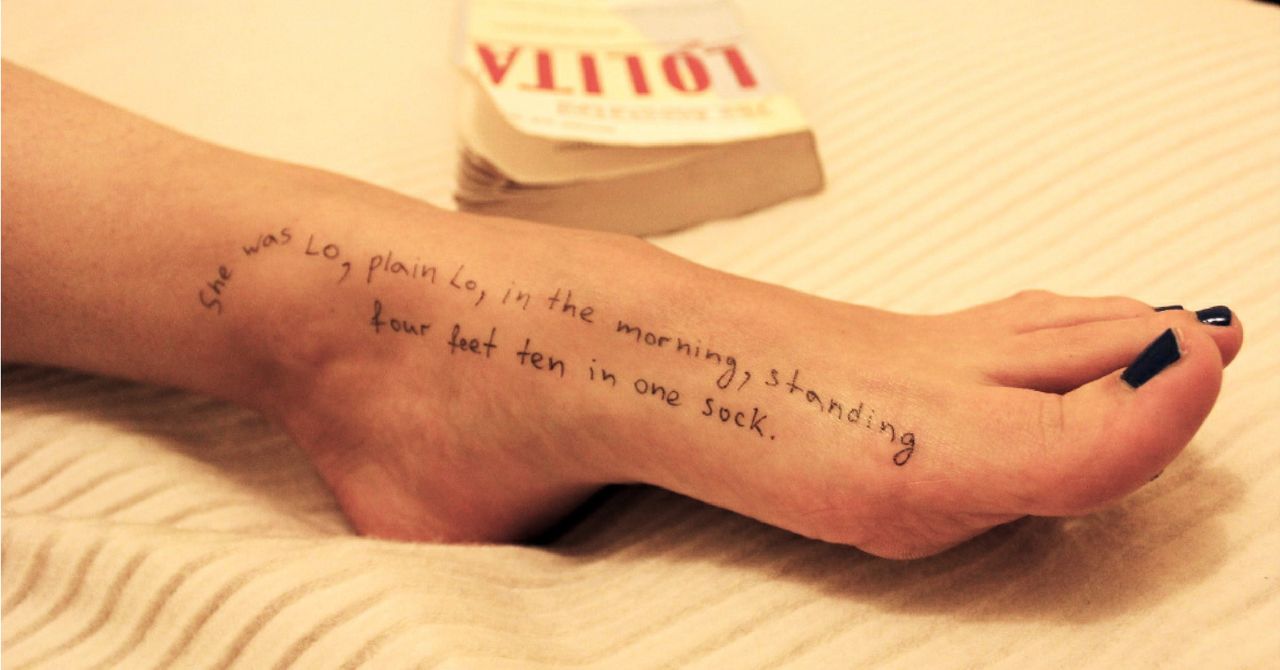Tech
Google avoids being dismantled after US court battle—and it’s down to the rise of AI

A year ago, Google faced the prospect of being dismantled. Today, artificial intelligence (AI) and a new court judgment has helped it avoid this fate. Part of the reason is that AI poses a grave threat to Google’s advertising revenues.
“Google will not be required to divest Chrome; nor will the court include a contingent divestiture of the Android operating system in the final judgment,” according to the decision.
Google must share certain data with “qualified competitors” as deemed by the court. This will include parts of its search index, Google’s inventory of web content. Judge Mehta will allow Google to continue paying companies like Apple and Samsung to distribute its search engine on devices and browsers. But he will bar Google from maintaining exclusive contracts.
The history of this decision goes back to a 2024 ruling by federal judge Amit Mehta. It found that Google maintained a monopoly in the search engine market, notably by paying billions to companies including Apple and Samsung to set Google as the default search engine on their devices.
Almost a year later, the same US judge issued his final ruling, and the tone could not be more different. Google will not be broken up. There will be no choice screen on new phones.
The nature of the search engine market, where more users generate more data, and more data improves search quality, made it impossible for competitors to challenge Google, the court found in 2024.
The 2024 ruling itself was controversial. While high quality data enables a dominant firm to extract more profit from consumers, it also allows it to provide a better service. Decades of research in economics has shown that determining which effect is more important is not straightforward.
At the time, the US Department of Justice deemed the issue so serious that it considered breaking up Google as the only viable solution. For instance, it suggested forcing the company to sell its web browser, Google Chrome.
The government also proposed forcing device manufacturers to offer users a choice of search engines during set up, and compelling Google to share most of its data on user behavior and ad bidding, where advertisers compete in auctions to get their ads shown to users for a specific search query or audience. These so-called “remedies,” measures Google would be required to implement to end its monopoly, aimed to restore competition.
Limited sharing
So, what has changed in a year to so radically change the perception of Google’s market dominance? The main answer is AI—and specifically, large language models (LLMs) like ChatGPT, Claude, and Google’s own Gemini. As users increasingly turn to LLMs for web searches, Google responded by placing AI-generated summaries at the top of its search results.
The way people navigate the internet is quickly evolving, with one trend reshaping the business models of online companies: the zero-click search. According to a Bain & Company survey, consumers now default to accepting AI-generated answers without further interaction. The data is striking: 80% of users report being satisfied with AI responses for at least 40% of their searches, often stopping at the summary page.
Threat to ad revenue
This AI-driven shift in consumer behavior threatens not only Google’s business model but also that of most internet-based companies. Advertising accounts for roughly 80% of Google’s revenue, earned by charging companies for prominent placement in search results and by leveraging its vast amount of user data to sell ad space across the web. If users stop clicking links, this revenue stream evaporates.
More importantly for this ruling, the market Google once monopolized may no longer be the relevant one. Today, Google’s primary potential competitors in search are not Microsoft Bing, but AI models like ChatGPT, Claude, and Perplexity. In the global race for AI dominance, the outcome is far from certain.
From an antitrust standpoint, there is little justification for penalizing Google now or forcing it to cede advantages to competitors. What would be the benefit for consumers of forcing Google to accept the £24.6 billion offer from Jeff Bezos’ Perplexity AI to buy the Chrome browser?
In essence, the judge acknowledges that Google monopolized the search engine market for a decade but concludes that the issue may resolve itself in the years ahead.
This situation echoes the first major monopolization case: Internet Explorer. For years, European and US regulators battled Microsoft to dismantle the dominance of its web browser, which was bundled with the then-dominant Windows 95 operating system.
By the time all appeals were exhausted, however, the monopoly had vanished. Internet Explorer was partly a victim of the rise of smartphones, which did not rely on Windows. The new king in town was a newcomer: a certain Google Chrome.
How you view the economic and political power of tech giants will shape which lesson you draw from this story. An optimistic view I suggested (with the economist Jana Friedrichsen) is that winner-takes-all markets can intensify competition through innovation. In such markets, incremental investment is not enough; to challenge Google, a competitor must offer a vastly superior product to capture the entire market.
Precisely because they ruthlessly defend their monopoly positions, tech giants show competitors that the potential gains from radical innovations are massive. The pessimistic view, however, is that years of dominance have left these firms largely unaccountable, which could embolden them in future.
This article is republished from The Conversation under a Creative Commons license. Read the original article.![]()
Citation:
Google avoids being dismantled after US court battle—and it’s down to the rise of AI (2025, September 6)
retrieved 6 September 2025
from https://techxplore.com/news/2025-09-google-dismantled-court-ai.html
This document is subject to copyright. Apart from any fair dealing for the purpose of private study or research, no
part may be reproduced without the written permission. The content is provided for information purposes only.
Tech
Get Up to 50% Off Select Items With These Ring Camera Deals

If you’re a fan of Amazon’s ecosystem, whether that’s asking your Alexa speaker to tell you about the weather or compulsively checking the video feed from your Ring doorbell, then it makes sense to expand and build onto the system. It’s always easier to keep to one ecosystem as much as you can with smart home gear, letting you stick to a single app and single subscription if you decide to invest in one.
While we’ve liked Ring’s cameras and home security products fine enough, they’re hard to recommend at the top of our guides since Ring is reintroducing a policy to enable local law enforcement to request footage directly from Ring users. It’s up to you if that’s something you want to invest in, and if you already have Ring products, it might make the most sense to continue adding onto that ecosystem than diving into a new one.
No matter the reason, if you’re looking to add a Ring product to your home, don’t get one without using our Ring coupon codes to get it for a better price.
50% Off Ring Cameras, Doorbells, and Outdoor Cameras
Ring is running a deal all month long with up to 50% off different products and bundles. You can get all kinds of Ring cameras and security accessories for a variety of discounts, from Ring’s video doorbell to indoor and outdoor cameras.
Save $150 on Wired Doorbell Pro and Floodlight Cam
If you’re looking for an outdoor combination, you can get both Ring’s Starter Pro Kit, which includes the Wired Doorbell Pro and Floodlight Cam, for $150 off the set. It’s a great option if you want to get a camera feed both at your doorstep and over your garage.
Bundle and Save on Ring Whole Home Basic Kit
Looking to deck out your whole home? Ring’s Whole Home Basic Kit is also discounted for $59 off. It includes Ring’s Outdoor Cam Plus Battery, Battery Doorbell, and the Alarm Security Kit, so you can get everything from video surveillance around the outside of your home and sensors to pair with the alarm system for inside of it.
Ring has a variety of subscription plans, which you’ll want since there’s no option to locally store your video footage. That means in order to play any video back to see what set off the camera or who was at the door, you’ll need one of these plans. Here’s a quick breakdown. Basic Ring Plan: Get the basics with video event playback and smart notifications for one camera. $5 per month or $50 per year. Standard Plan: All the core Ring experience with enhanced features for all your devices. $10 per month, or $100 per year. Premium Plan: Ring home the best of the best with our most advanced AI and recording features. $20 per month or $200 per year.
Stay Connected With $29 Off Pet Basic Kit + Pet Tag
Ring has a pet package you can get for a discount, too. You’ll get both Ring’s Indoor Cam and the Pet Tag, which has a QR code that lets anyone who finds your pet scan it and get your information to contact you. It’s 50% off right now, so if you’re looking for new tags and a camera to keep an eye on your favorite furry companion, this is your moment.
Tech
“Wait, we have the tech skills to build that”

Students can take many possible routes through MIT’s curriculum, which can zigag through different departments, linking classes and disciplines in unexpected ways. With so many options, charting an academic path can be overwhelming, but a new tool called NerdXing is here to help.
The brainchild of senior Julianna Schneider and other students in the MIT Schwarzman College of Computing Undergraduate Advisory Group (UAG), NerdXing lets students search for a class and see all the other classes students have gone on to take in the past, including options that are off the beaten track.
“I hope that NerdXing will democratize course knowledge for everyone,” Schneider says. “I hope that for anyone who’s a freshman and maybe hasn’t picked their major yet, that they can go to NerdXing and start with a class that they would maybe never consider — and then discover that, ‘Oh wait, this is perfect for this really particular thing I want to study.’”
As a student double-majoring in artificial intelligence and decision-making and in mathematics, and doing research in the Biomimetic Robotics Laboratory in the Department of Mechanical Engineering, Schneider knows the benefits of interdisciplinary studies. It’s a part of the reason why she joined the UAG, which advises the MIT Schwarzman College of Computing’s leadership as it advances education and research at the intersections between computing, engineering, the arts, and more.
Through all of her activities, Schneider seeks to make people’s lives better through technology.
“This process of finding a problem in my community and then finding the right technology to solve that — that sort of approach and that framework is what guides all the things I do,” Schneider says. “And even in robotics, the things that I care about are guided by the sort of skills that I think we need to develop to be able to have meaningful applications.”
From Albania to MIT
Before she ever touched a robot or wrote code, Schneider was an accomplished young classical pianist in Albania. When she discovered her passion for robotics at age 13, she applied some of the skills she had learned while playing piano.
“I think on some fundamental level, when I was a pianist, I thought constantly about my motor dynamics as a human being, and how I execute really complex skills but do it over and over again at the top of my ability,” Schneider says. “When it came to robotics, I was building these robotic arms that also had to operate at the top of their ability every time and do really complex tasks. It felt kind of similar to me, like a fun crossover.”
Schneider joined her high school’s robotics team as a middle schooler, and she was so immediately enamored that she ended up taking over most of the coding and building of the team’s robot. She went on to win 14 regional and national awards across the three teams she led throughout middle and high school. It was clear to her that she’d found her calling.
NerdXing wasn’t Schneider’s first experience building new technology. At just 16, she built an app meant to connect English-speaking volunteers from her international school in Tirana, Albania, to local charities that only posted jobs in Albanian. By last year, the platform, called VoluntYOU, had 18 ambassadors across four continents. It has enabled volunteers to give out more than 2,000 burritos in Reno, Nevada; register hundreds of signatures to support women’s rights legislation in Albania; and help with administering Covid-19 vaccines to more than 1,200 individuals a day in Italy.
Schneider says her experience at an international school encouraged her to recognize problems and solutions all around her.
“When I enter a new community and I can immediately be like, ‘Oh wait, if we had this tool, that would be so cool and that would help all these people,’ I think that’s just a derivative of having grown up in a place where you hear about everyone’s super different life experiences,” she says.
Schneider describes NerdXing as a continuation of many of the skills she picked up while building VoluntYOU.
“They were both motivated by seeing a challenge where I thought, ‘Wait, we have the tech skills to build that. This is something that I can envision the solution to.’ And then I wanted to actually go and make that a reality,” Schneider says.
Robotics with a positive impact
At MIT, Schneider started working in the Biomimetic Robotics Laboratory of Professor Sangbae Kim, where she has now participated in three research projects, one of which she’s co-authoring a paper on. She’s part of a team that tests how robots, including the famous back-flipping mini cheetah, move, in order to see how they could complement humans in high-stakes scenarios.
Most of her work has revolved around crafting controllers, including one hybrid-learning and model-based controller that is well-suited to robots with limited onboard computing capacity. It would allow the robot to be used in regions with less access to technology.
“It’s not just doing technology for technology’s sake, but because it will bridge out into the world and make a positive difference. I think legged robotics have some of the best potential to actually be a robotic partner to human beings in the scenarios that are most high-stakes,” Schneider says.
Schneider hopes to further robotic capabilities so she can find applications that will service communities around the world. One of her goals is to help create tools that allow a surgeon to operate on a patient a long distance away.
To take a break from academics, Schneider has channeled her love of the arts into MIT’s vibrant social dancing scene. This year, she’s especially excited about country line dancing events where the music comes on and students have to guess the choreography.
“I think it’s a really fun way to make friends and to connect with the community,” she says.
Tech
Terrifying New Photos Emerge From the Jeffrey Epstein Estate

A New York Times spokesperson told WIRED in a statement that Brooks “regularly attends events to speak with noted and important business leaders to inform his columns,” and that Brooks had no contact with Epstein before or after attending the 2011 dinner where the photo was taken.
A representative for the Gates Foundation did not immediately respond to a request for comment, nor did representatives for Google, Allen, Chomsky, and Bannon’s War Room podcast.
The release also includes closeups of women’s body parts with quotes from Vladimir Nabokov’s book Lolita scrawled onto them, a photo of a pill bottle labelled with a medication usually used to relieve the symptoms of urinary tract infections, and redacted images of travel documents from several countries, including Ukraine and Lithuania.
The House committee’s investigation into Epstein has been going on for several months, and is separate from the document dump expected to be released by the US Department of Justice this week. The Epstein Files Transparency Act, which was signed into law last month, requires the DOJ to release “all unclassified records, documents, communications, and investigative materials” in its possession by December 19.
As part of the investigation, the committee subpoenaed the Epstein estate, and included instructions for the estate to produce two separate sets of documents—one to the Democrats on the committee, the other to Republicans. As the committee has been receiving documents from the estate, both Democrats and the committee as a whole have done their own releases. Material in these releases has raised new questions about the well-documented relationship between Epstein and president Donald Trump; among other things, it shows Epstein claiming intimate knowledge of Trump’s views in exchanges with a Gates adviser.
Documents related to investigations into Epstein have overshadowed the first year of the second Trump administration, several members of which made the release of the documents a central talking point in the lead up to the 2024 presidential election. The political dynamics have shifted over the past year, as it became clear that Trump, a one-time friend of Epstein’s, appears repeatedly in the investigative record.
“As we approach the deadline for the Epstein Files Transparency Act, these new images raise more questions about what exactly the Department of Justice has in its possession.” said Representative Robert Garcia, the ranking Democratic member on the committee, in a press release. “We must end this White House cover-up, and the DOJ must release the Epstein files now.”
-

 Business5 days ago
Business5 days agoHitting The ‘High Notes’ In Ties: Nepal Set To Lift Ban On Indian Bills Above ₹100
-

 Politics1 week ago
Politics1 week agoTrump launches gold card programme for expedited visas with a $1m price tag
-

 Business1 week ago
Business1 week agoRivian turns to AI, autonomy to woo investors as EV sales stall
-

 Fashion1 week ago
Fashion1 week agoTommy Hilfiger appoints Sergio Pérez as global menswear ambassador
-

 Business1 week ago
Business1 week agoCoca-Cola taps COO Henrique Braun to replace James Quincey as CEO in 2026
-

 Sports1 week ago
Sports1 week agoPolice detain Michigan head football coach Sherrone Moore after firing, salacious details emerge: report
-

 Tech1 week ago
Tech1 week agoGoogle DeepMind partners with UK government to deliver AI | Computer Weekly
-

 Sports1 week ago
Sports1 week agoU.S. House passes bill to combat stadium drones


















